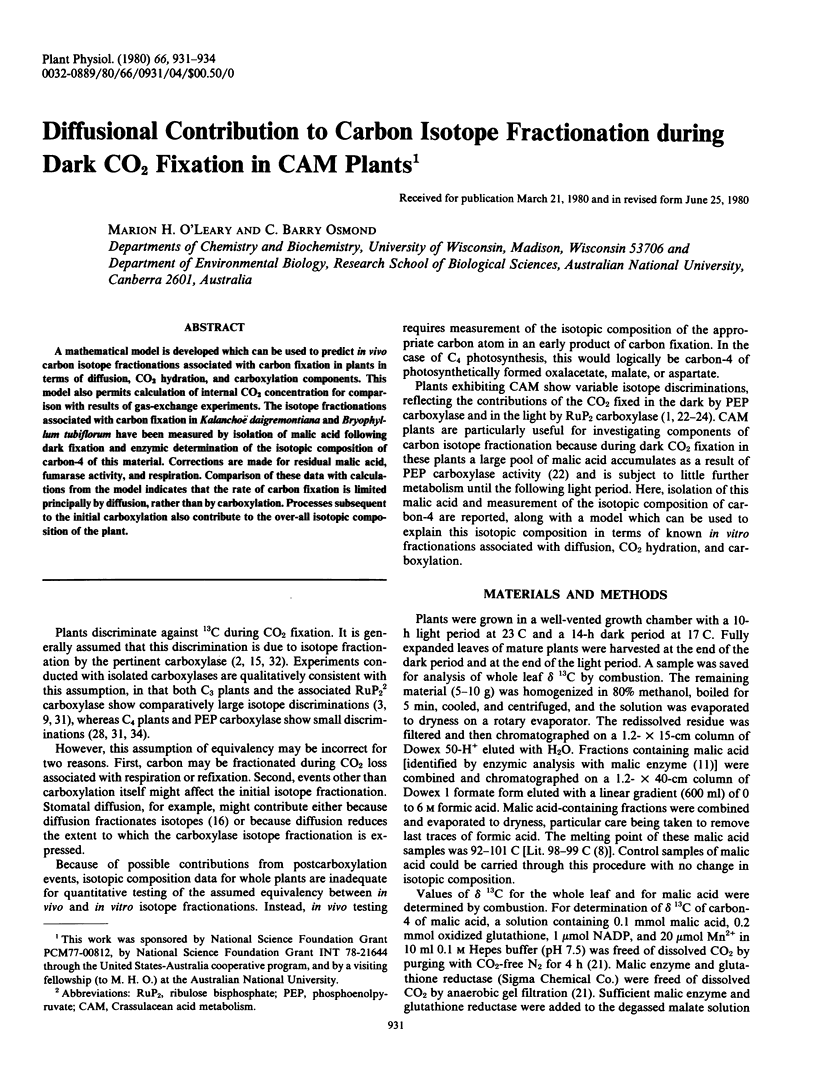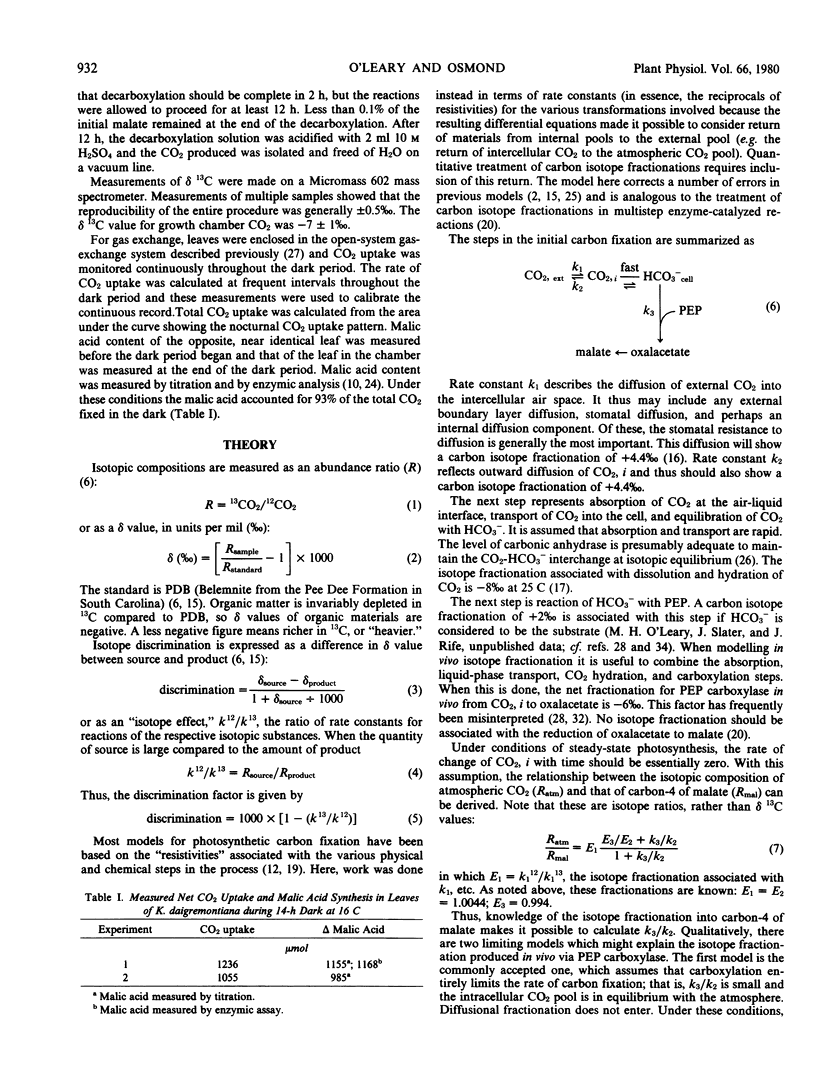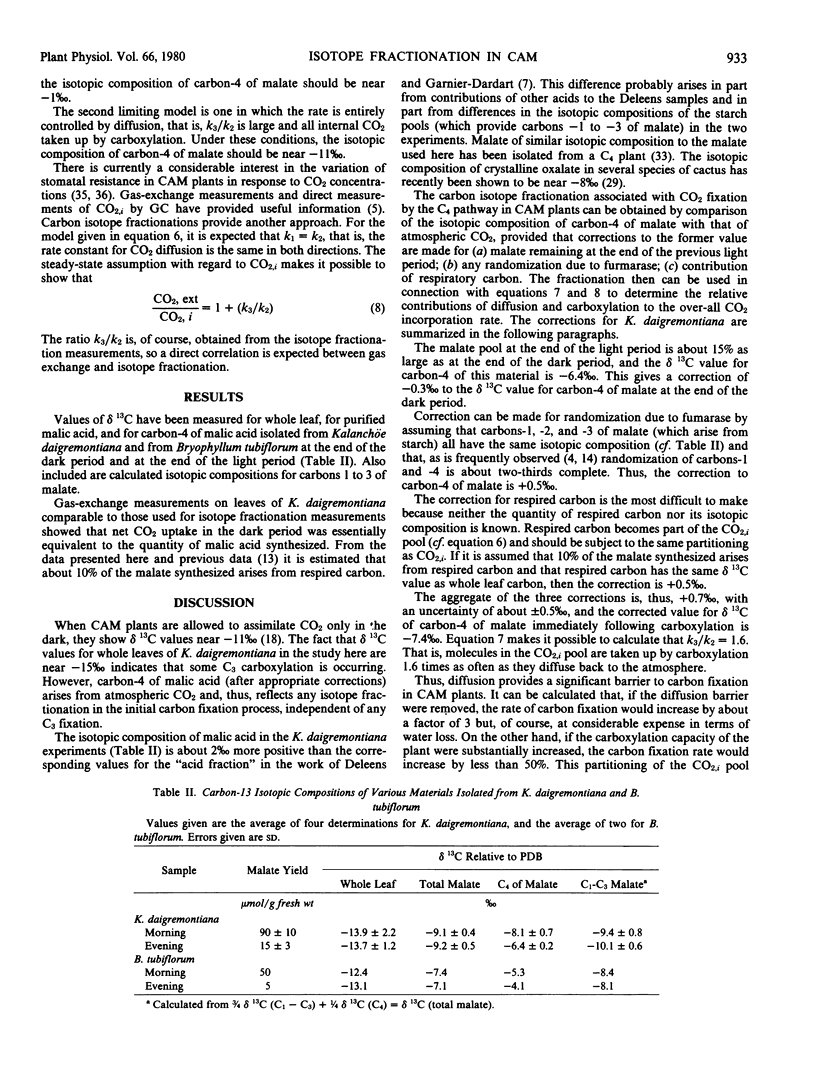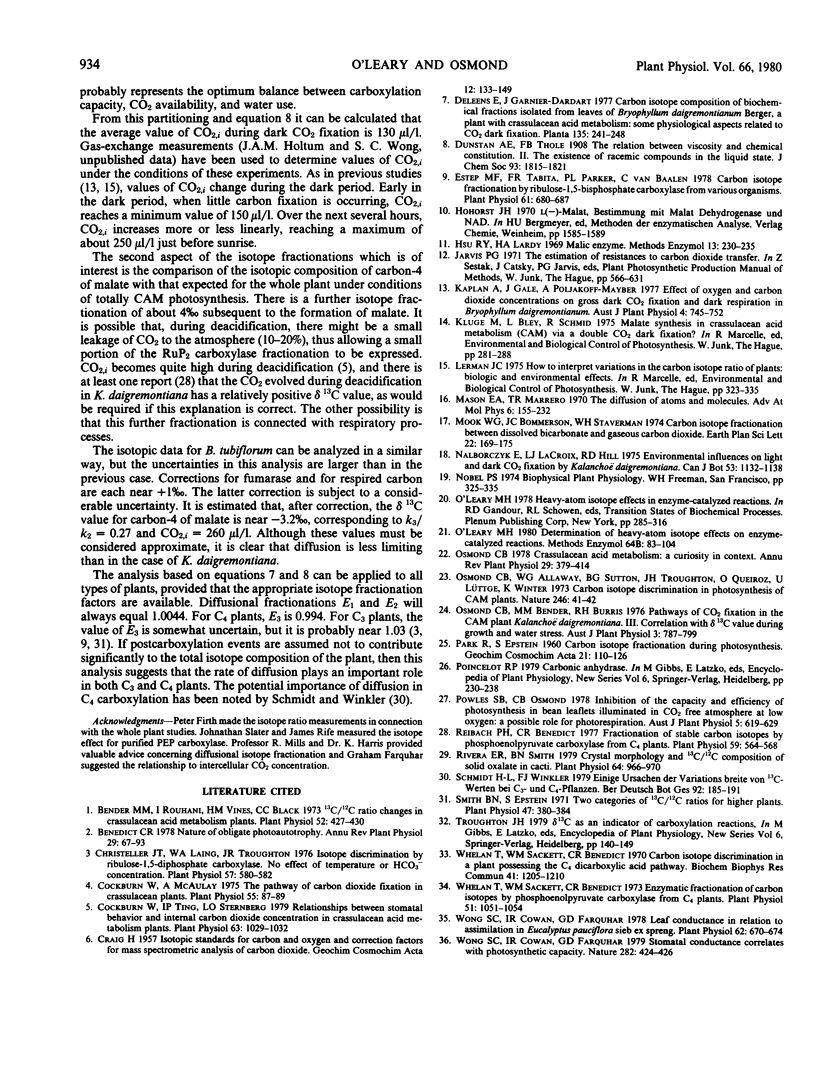Abstract
A mathematical model is developed which can be used to predict in vivo carbon isotope fractionations associated with carbon fixation in plants in terms of diffusion, CO2 hydration, and carboxylation components. This model also permits calculation of internal CO2 concentration for comparison with results of gas-exchange experiments. The isotope fractionations associated with carbon fixation in Kalanchoë daigremontiana and Bryophyllum tubiflorum have been measured by isolation of malic acid following dark fixation and enzymic determination of the isotopic composition of carbon-4 of this material. Corrections are made for residual malic acid, fumarase activity, and respiration. Comparison of these data with calculations from the model indicates that the rate of carbon fixation is limited principally by diffusion, rather than by carboxylation. Processes subsequent to the initial carboxylation also contribute to the over-all isotopic composition of the plant.
Full text
PDF



Selected References
These references are in PubMed. This may not be the complete list of references from this article.
- Bender M. M. C/C ratio changes in crassulacean Acid metabolism plants. Plant Physiol. 1973 Nov;52(5):427–430. doi: 10.1104/pp.52.5.427. [DOI] [PMC free article] [PubMed] [Google Scholar]
- Christeller J. T., Laing W. A. Isotope Discrimination by Ribulose 1,5-Diphosphate Carboxylase: No Effect of Temperature or HCO(3) Concentration. Plant Physiol. 1976 Apr;57(4):580–582. doi: 10.1104/pp.57.4.580. [DOI] [PMC free article] [PubMed] [Google Scholar]
- Cockburn W., McAulay A. The pathway of carbon dioxide fixation in crassulacean plants. Plant Physiol. 1975 Jan;55(1):87–89. doi: 10.1104/pp.55.1.87. [DOI] [PMC free article] [PubMed] [Google Scholar]
- Cockburn W. Relationships between Stomatal Behavior and Internal Carbon Dioxide Concentration in Crassulacean Acid Metabolism Plants. Plant Physiol. 1979 Jun;63(6):1029–1032. doi: 10.1104/pp.63.6.1029. [DOI] [PMC free article] [PubMed] [Google Scholar]
- Estep M. F., Tabita F. R., Parker P. L., Van Baalen C. Carbon isotope fractionation by ribulose-1,5-bisophosphate carboxylase from various organisms. Plant Physiol. 1978 Apr;61(4):680–687. doi: 10.1104/pp.61.4.680. [DOI] [PMC free article] [PubMed] [Google Scholar]
- O'Leary M. H. Determination of heavy-atom isotope effects on enzyme-catalyzed reactions. Methods Enzymol. 1980;64:83–104. doi: 10.1016/s0076-6879(80)64006-3. [DOI] [PubMed] [Google Scholar]
- Reibach P. H., Benedict C. R. Fractionation of stable carbon isotopes by phosphoenolpyruvate carboxylase from c(4) plants. Plant Physiol. 1977 Apr;59(4):564–568. doi: 10.1104/pp.59.4.564. [DOI] [PMC free article] [PubMed] [Google Scholar]
- Rivera E. R., Smith B. N. Crystal morphology and carbon/carbon composition of solid oxalate in cacti. Plant Physiol. 1979 Dec;64(6):966–970. doi: 10.1104/pp.64.6.966. [DOI] [PMC free article] [PubMed] [Google Scholar]
- Smith B. N., Epstein S. Two categories of c/c ratios for higher plants. Plant Physiol. 1971 Mar;47(3):380–384. doi: 10.1104/pp.47.3.380. [DOI] [PMC free article] [PubMed] [Google Scholar]
- Whelan T., Sackett W. M., Benedict C. R. Carbon isotope discrimination in a plant possessing the C4 dicarboxylic acid pathway. Biochem Biophys Res Commun. 1970 Dec 9;41(5):1205–1210. doi: 10.1016/0006-291x(70)90214-7. [DOI] [PubMed] [Google Scholar]
- Whelan T., Sackett W. M. Enzymatic fractionation of carbon isotopes by phosphoenolpyruvate carboxylase from c(4) plants. Plant Physiol. 1973 Jun;51(6):1051–1054. doi: 10.1104/pp.51.6.1051. [DOI] [PMC free article] [PubMed] [Google Scholar]
- Wong S. C., Cowan I. R., Farquhar G. D. Leaf Conductance in Relation to Assimilation in Eucalyptus pauciflora Sieb. ex Spreng: Influence of Irradiance and Partial Pressure of Carbon Dioxide. Plant Physiol. 1978 Oct;62(4):670–674. doi: 10.1104/pp.62.4.670. [DOI] [PMC free article] [PubMed] [Google Scholar]


